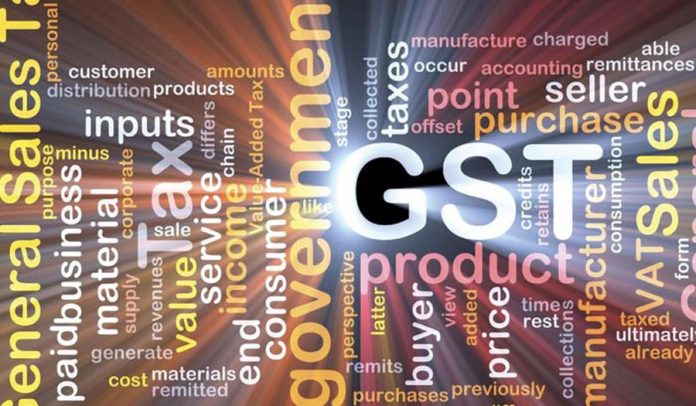There is mixed reaction on the first anniversary of the historic and one of the biggest tax reforms — the Goods and Services Tax (GST). CargoTalk charts out the impact of the tax regime on logistics verticals, like freight forwarders, air cargo, express, etc. Experts map out the changes that GST has carved out for the cargo sector.
It has already been a year since the government passed the most imminent, Goods and Service Tax (GST) regime on July 1, 2017. Certainly, the tax has given many reasons to debate on what has been necessitated and what more is in store for the logistics sector. Since its implementation, the logistics industry has enjoyed the leeway than most industries. Now, with the first anniversary of one of the most crucial reforms of the country, it is pertinent to check has the aim of ‘One Nation, One Tax’ been realised? looks at the journey of the tax regime in the logistics industry.
Sharing how the tax brought relief to the industry, Ashish Asaf, Managing Director & CEO, SA Consultants & Forwarders, says, “The implementation of GST proved to be a significant change for the economy and for the freight forwarding industry as well. The freight forwarding industry is highly fragmented and unorganised in nature which is now changing with the advent of GST. Now, several unorganised players have registered themselves under the tax because of various benefits provided like reduction in additional costs in the form of a plethora of indirect taxes, also the facility of input tax credit can also be availed. As a result, unorganised sectors would eventually strive to improve their service levels if they intend to successfully grow in the competitive scenario. In the digitisation process, the online facilities for filing the monthly returns, payment of tax and majorly tax-refund application has now become a seamless process and resulting into less documentation.”
According to Bharat J Thakkar, Past President and Permanent Member – Board of Adviser, ACAAI and Co-Founder & Joint Managing Director, Zeus Air Services, “With uniformity in nature, GST is in process mitigating this imbalance and will boost airfreight once there is no tax on exports. It will help promoting airfreight consolidations and transhipments, reducing supply chain costs and strengthen the government’s vision to position India as the logistics hub of the world.”
Sam Katgara, Partner, Jeena & Co. says, “In the first year itself too many changes were made by the GST council and many of the changes came with almost zero or very short lead times, which led to some struggle. Even now, there is a need to improvise processes and controls. More challenges and learning are yet to come when we file our annual returns and undergo audits by respective states.” Vimal Talwar, Business Development Manager, Kuehne + Nagel, adds, “GST was one of the mammoth tasks which subsumed over a dozen of different central and state taxes into one, but with several slabs. Overall acceptance and implication has been satisfactory. Businesses across all domains still have apprehensions related to refund procedures which are not smooth even after achieving a mark of one trillion (INR) in terms of total collection.”
“Major challenges have been resolved. The industry now has a much deeper understanding about compliance requirements and how to adhere to them,” feels Huned Gandhi, Managing Director – Air & Sea Logistics India & Bangladesh, Dachser India.
Speaking about the overall success of GST implementation, Mayur Gandhi, CFO, Schenker India, tells, “The most visible result of GST and e-Way Bill implementation has been the removal of physical check posts at state borders which have substantially reduced vehicle turnaround time. Also, India has successfully jumped 19 positions – from 54th in 2014 to 35th in 2016 – in the World Bank’s Logistics Performance Index (LPI).”
Talking about the drive at CSIA cargo operations, Manoj Singh, Senior Vice President & Head – Cargo, Mumbai International Airport (MIAL), shares, “GVK MIAL has made the necessary technical changes to incorporate GST into its cargo management system. As a result, our system is 100 per cent GST compliant in terms of both operations and financial transactions. MIAL, after consultations with customs, has modified the process and enabled the customs brokers to generate invoices in the names of importers under the Pure Agent concept. Thus, importers can claim GST credit directly in their name in all the air cargo transactions.”
Abhik Mitra, Managing Director & CEO, Spoton Logistics, says, “Overall, it has been a good year for the logistics industry in general, and express logistics in particular. Uniform taxation has certainly reduced paperwork. e-Way bill has streamlined our operations and improved the ease of doing business as well. There were some initial difficulties due to technical glitches at the GSTN portal and some pertinent ones on policies, but, these are teething troubles and over time should smoothen out.”
Vikram Paul, Regional Managing Director – Indian Sub-Continent, Director Business & Product Development – Middle East & Sub Sahara, Cargo Partner Logistics India, elaborates, “It was probably not the best planned policy and was communicated poorly. The industry had very little time for preparation for the massive change that took place. But with time, it has settled down. As far as our industry is concerned and specifically the forwarding side of the business, it’s a great enabler. But, for warehousing and distribution side, people have started to change their own footprints, landscape to configure the real essence to take advantage of the tax.”
Sunil Arora, Vice President, Air Cargo Agents Association of India, expresses, “GST came in like a phobia or hurdle or one can say an impediment to the trade. However, our industry has taken GST with the open arms and because of the GST, e-Way Bill, another remarkable reform, has come up. Initially, airfreight was under GST but later government realised that airfreight cannot be under GST. Airfreight is attached to the country’s exim and you cannot add taxes to our export commodity. Gradually, this tax has has been adapted and accepted as a great turnaround of the country’s economy.”
Sudeep Mehrotra, Senior Director – Corporate Solutions, Alvarez & Marsal, tells, “GST implementation on the process and technology front has been smoother than expected. Except for e-Way Bill most of the modules have been launched and stabilised within projected timelines. The awareness building and eco-system around it has also been ramped up in accordance to the expectation. The benefits in terms of industry expectations is taking longer than expected. The refunds are taking time and the benefits to the end-users have been flowing at the rate lower than desired.”
Vikram Mansukhani, Head – 3PL Division, TVS Logistics Services – India, points, “Securing a competitive edge in the post-GST scenario mandates a high level of transparency, discipline to timelines, adherence to compliances and investment in technology platforms. Businesses that have been using unorganised transporters and just warehouse service providers are migrating to formal 3PLs who can bring in knowledge services, understand and use technology and operate logistics and supply chain more efficiently. A wide network footprint, proximity to consumption and manufacturing locations, and network redesign capabilities are becoming key deciding factors during empanelling. This has tilted the scales in favour of large organised players like TVS Logistics.
Amit Tandon, Managing Director, Asia Shipping India, says, “As expected, there have been teething troubles in the implementation of the new GST as the concept of IGST, CGST/ SGST and the input credit under the new regime has taken time to take roots with the business community. However, the government mechanism for providing clarifications as well as responding to the various genuine difficulties faced by the assesses has been quick and prompt. But in the process there have been amendments and clarifications almost every other day. The need of the hour is to streamline the entire system to make it more user-friendly. The main problem that the industry continues to face, as the other industries also do, is of reconciliation of the various returns submitted as per the provisions of the GST Acts, and the refunds due from the government. Freight forwarding and supply chain industries are credit-intensive and blockage of large sums of money in refunds due on account of GST, particularly due to unclaimed input credits, results in blockage of substantial working capital, which is already affecting business operations adversely.”
What were the expectations?
“We expected the export will be zero-rated, which has not happened and exemption until September 2018 was introduced instead in January 2018, and further extended until September 2019. Our industry made several presentations, that there should be ‘zero tax’ on exports, as current system is blocking funds. We are waiting for refunds and are under tremendous financial constraints,” tells Thakkar.
Talwar believes, “Freight forwarding, being an integral part of the logistics industry, excited initially but delay in refund procedures inculcates resistance. Our industry colleagues anticipated more favourable and exporter-friendly structures. Industry veterans were forced to make several representations in front of government to remove airfreight component from GST regime and make air cargo competitive for exporters.”
According to Huned, “The Indian freight forwarding fraternity was expecting an ease in doing business and, in fact, significant achievements have already been accomplished. The removal of Octroi, for example, has facilitated transportation at major gateway air and sea ports like Mumbai. It has also reduced truck lay times at check posts, which is improving the lead times from and to the air and sea ports.”
Asaf adds, “Indian freight forwarding industry has been seeing the shift from being unorganised to organised with the implementation of GST that resulted into implementing technology at a greater scale by companies. The expectations from such a change is the fast adaptability which Indian markets needs to take for such a technological advancement, new methods of taxation, the valuation mechanism to clear all the ambiguity surrounding what, when and where of GST.”
Speaking of the organised sector, Gandhi says, “Firstly, GST implementation was expected to do away with border check posts and thereby reduce transit downtime and logistics cost. We are already witnessing the benefits and hope to save substantially on logistics costs for our customers moving ahead. Secondly, the passage of GST and e-Way Bill has created a mechanism for centralised registrations and compliance which would not only help the service providers to claim and utilise credits, but also to track tax compliance and save enormous time. In the pre-GST and e-Way Bill era, it is estimated that about 60 per cent of logistics time was spent for tax compliance at the interstate check points on scrutiny of records and tracking of interstate sales tax, consequently hurting the efficiency of logistics companies.”
“Third, although a bit premature to comment, another positive fallout of the GST implementation would be consolidation in the warehousing sector, as companies would prefer building hub-and-spoke warehousing models with big regional setups over today’s setup of warehouses in each and every state. This will result in reduction of storage and handling costs, leading to lower overall inventory costs. Lastly, with the creation of multi-modal logistics parks, demand for higher tonnage vehicles is expected to witness an increase due to their ability to carry more cargo. This means the demands of a particular industry or cluster can be met by a smaller number of vehicles and in lesser time, thereby improving the supply chain and forward linkages to markets,” he continues.
From the air cargo industry perspective, Singh says, “Air cargo stakeholders have been waiting for a single-tax system for years. The implementation of GST led to the abolition of octroi and streamlined the multiple taxation system. Due to which the air cargo dwell time and volumes at CSIA improved significantly. GST also addressed the various procedural hurdles that prevailed in the past and introduced transparency in taxation.
The stakeholders are now hopeful of industry status for the air cargo trade.”
As per Mansukhani, “The industry expected that the tax reform will boost the Indian economy and that businesses will opt for larger logistics outsourcing. Consolidation was another outcome that was expected, and this also indicated that investments in automation, mechanisation and application of IT solutions at warehouses and for better network planning, will increase.”
From the express and courier industry viewpoint, Mitra says, “The ‘one nation, one market, one tax’ approach would benefit all and would therefore expand business opportunities. The primary expectation was that GST will bring about significantly greater levels of compliance by the shippers, change in the supply chain structure in terms of reduction of warehousing locations and greater usage of technology in enabling and controlling the movement of shipments and shipment related data across the network. We expected to save on time spent at check posts and filing various taxes. We also expected to save money, both capital and operational expenditure, due to faster flows through a less complex eco-system.” Tandon says, “GST laws have replaced the service tax provisions as applicable to freight forwarding and supply chain industry, which is a service Industry. The service tax provisions themselves had taken more than four years to be streamlined and clarified. Therefore, it is natural that understanding the needs of international freight forwarding and supply chain industry, and addressing them, is a time consuming and cumbersome process. However, now with the implementation of the GST, the freight forwarding and supply chain industry have been hopeful that, even with the provisions for availing input credit, the burden of taxation on the exports, imports as well as the domestic movement of goods, and the provision of services for the same should not become prohibitive.”
Mehrotra lists key expected impact of GST:
- Rationalisation of warehouses – User industry expected to redesign network footprint to optimise logistics costs. Post GST, logistics services providers were expected to offer integrated warehousing solutions at suitable locations.
- Enhanced transport capacity and efficiency – Upon consolidating warehouses, each warehouse of a logistics company was expected to have a larger geography to cover. Hence, this would require more efficient logistics with better investment in the same to ensure timely deliveries and better connectivity.
- Performing logistics activities on behalf of companies – Logistics companies would consider working along with their customers to review outsourcing processes and activities taking into consideration logistics and overhead cost savings. This could include opportunity to replace C&F operations for certain industries.
- e-Way Bills – Requirement of e-Way Bill for movement of all goods, along with their limited validity would result in technology adoption to ensure e-Way Bills are valid, traceable and regularly updated when expired. This would result in increase in organised market share.
- Superior technology – Implementation of GST was expected to make logistics industry more competitive as freight transit times were expected to reduce by 30-40 per cent and freight costs by 20-30 per cent. Logistics companies were expected to invest in efficient technology to handle their increase in traffic, along with new processes such as managing of e-Way Bills and catering to larger geographies.
- Skills training and upgradation – The drastically changing dynamics of logistics companies such as the reinventing of the supply chain, repositioning of warehouses and embracing of technology was expected to result in more focused and intensive training.
Present scenario
Katgara believes, “It is still a learning phase for the industry with multiple state registrations, multiple GST rates, complicated return filing process, RCM mechanism, state-wise audits, these are some of the challenges which are being faced or expected to come.”
“A host of measures has been taken to help the industry overcome the problems faced initially. As a consequence, the new tax system has settled in to a very large extent. However, the functioning of the GST portal has to be looked into and administration must be kept to a minimum to make processes more efficient,” tells Huned.
According to Thakkar, Section13 (3) is, “With uniformity in nature, GST is in process mitigating this imbalance and will boost airfreight once there is no tax on exports. It will help promoting airfreight consolidations and transhipments, reducing supply chain costs and strengthen the government’s vision to position India as the logistics hub of the world.” As per Thakkar, Section 13 (3) should be amended as regard to the export cargo (whether we bill the exporter or the overseas associate) to the place of supply as the destination, the government should amend Sec 13(9) to include all the allied services associated with the export cargo. “We treat the place of supply as India (taxable territory) and tax the transportation up to CFS, CFS charges, THC, BL fee, AWB fee, etc, because of the present wordings only,” he says.
“And, these wordings are: (3) The place of supply of the following services shall be the location where the services are actually performed, namely; services supplied in respect of goods which are required to be made physically available by the recipient of services to the supplier of services, or to a person acting on behalf of the supplier of services in order to provide the services. When such services are provided from a remote location by way of electronic means, the place of supply shall be the location where goods are situated at the time of supply of services. The same should be amended as; services supplied in respect of goods which are required to be made physically available by the recipient of services to the supplier of services, or to a person acting on behalf of the supplier of services to provide the services. Provided that when such services are provided from a remote location by way of electronic means, the place of supply shall be the location where goods are situated at the time of supply of services, provided that such services are not related to the export of goods. For such services, the place of supply shall be the destination of the goods.
Similarly, Sec 12(8) should be amended suitably to include the transportation and the allied services related to the export cargo. It should be: (8) The place of supply of services by way of transportation of goods to a place within India, including by mail or courier to, (a) a registered person, shall be the location of such person; (b) a person other than a registered person, shall be the location at which such goods are handed over for their transportation. The place of supply of services by way of transportation of goods to a place outside India, other than by mail or courier to, (a) a registered person, shall be the destination of such goods; (b) a person other than a registered person, destination of such goods,” explains Thakkar.
“The reaction of the industry is at different levels of the spectrum ranging from early adopters to fence sitters. 3PL and 4PL solution providers have benefited from increase in organised penetration. The delays at state boundaries have significantly declined. However, consolidation of warehouses is being conducted at a rate slower than expected,” emphasises Mehrotra.
Tandon adds, “The anti-profiteering provisions envisaged in the GST law need to be enforced more effectively. There is also urgent need to streamline the system of charging and refund of GST to reduce the amounts of refunds due.”
Suggestions
- There should be consistency in GST rates. For example, airfreight GST rates v/s sea freight GST rates are not consistent both for exports and imports
- The procedure to claim input credit for common inputs services should be simplified rather than subjecting the industry to complex procedures it would be better to leave it to the discretion of the assesses on how & where state would want to claim the input credit. This simple change would bring a big relief to the industry
- The key aspect in the second year of GST will be stabilisation and adoption of integrated technology. There is a need to enable system integrators who can offer integration of client-side PO generation, invoice generation, LR generation process with logistics service providers systems and reports/forms of GST network
- While the e-Way bill and its implementation is a positive step, however, the government needs to give time to the shippers and service providers in terms of imposing huge penalties with regards to process/human errors
- A few technical and procedural glitches related to tax refund or paperwork also need to be resolved. We need a robust digital refund mechanism for efficient and seamless cash flows
- Next 10 years would be very exciting and crucial for India as it will shape up the progression of economy. More perseverance, improvisation on structural and procedural implications of policies will enhance actual and true potential of industry
- Road to 2030, to be at third spot, (overtaking Britain, Germany & Japan) is the new talk in industry corridors
- The next target should be simpler compliance with less manual work on the industry side















